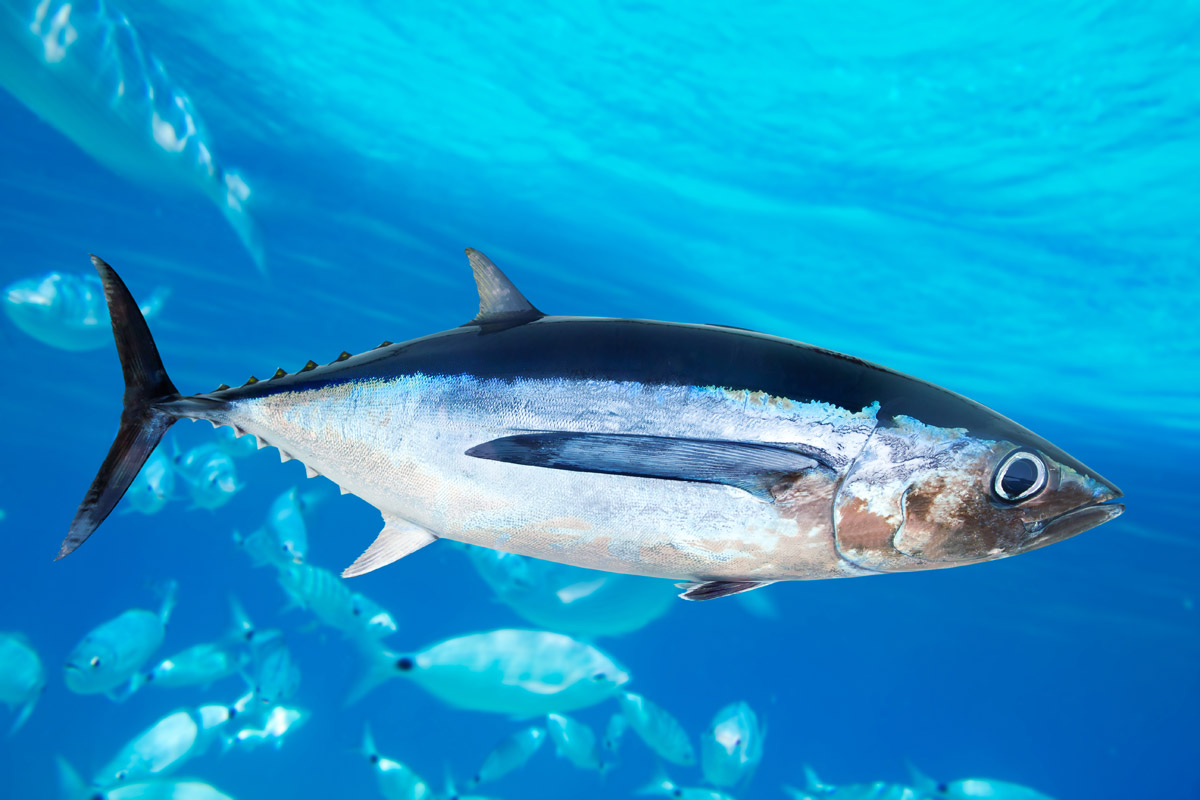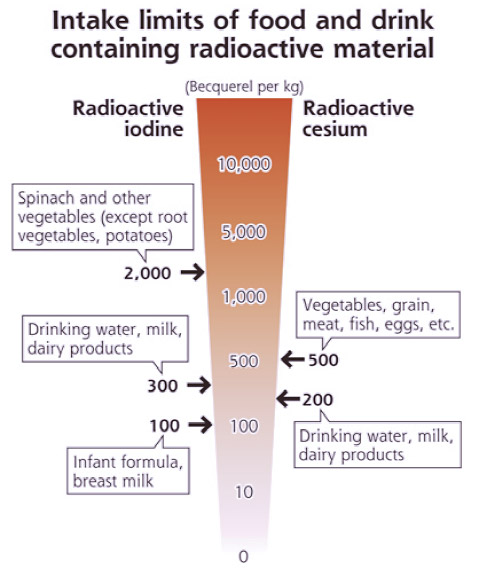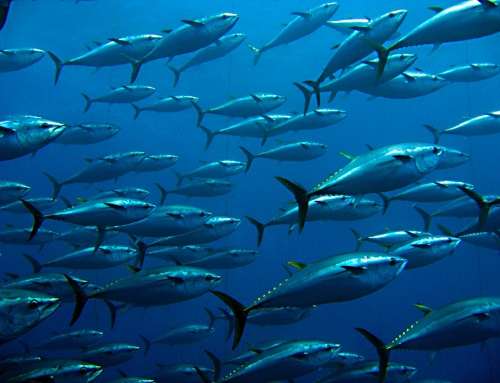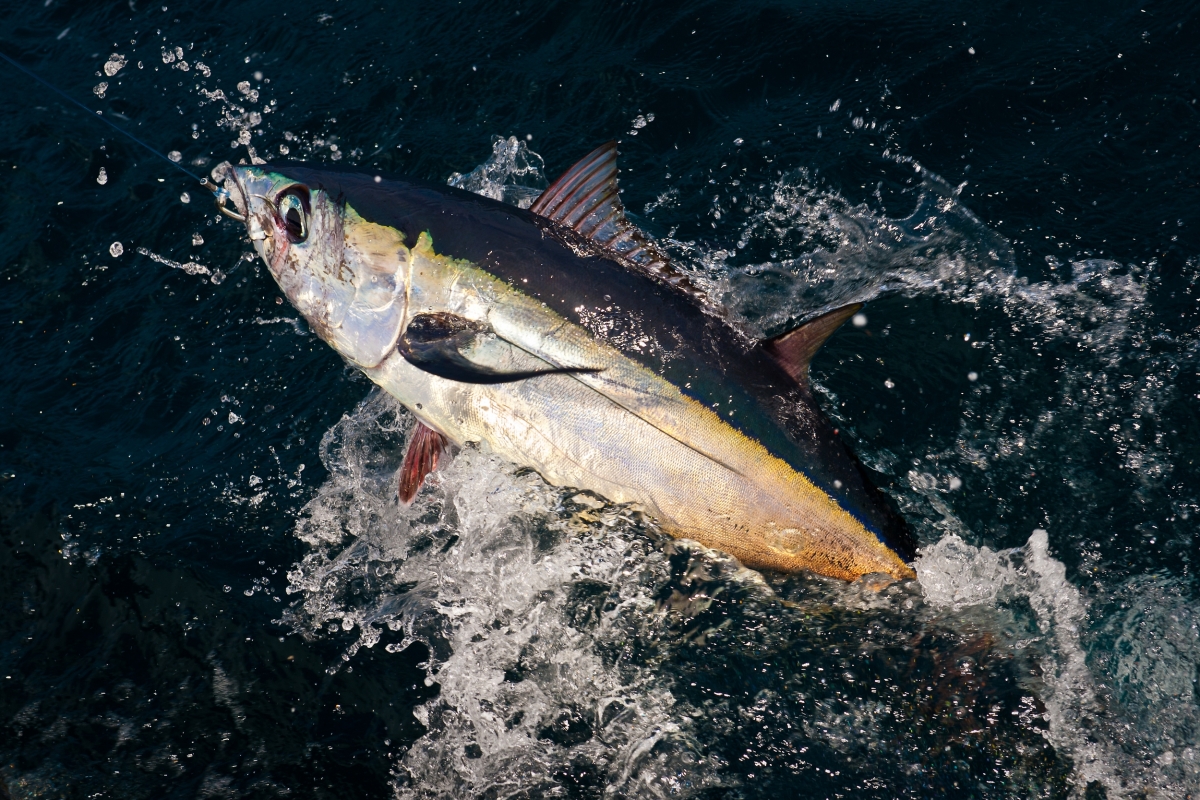Everyone, (general public, fishermen, potential buyers/consumers, governments, markets, and media) is concerned over the 2011 catastrophe that befell Japan in the wake of the Fukushima spill of radioactive contaminated cooling water into the ocean. The concern extends to the people and families of the surrounding area and to the contamination of seawater and, possibly seafood species that may result.
To address some of these concerns we have detailed what we know about the situation, and what we have done about testing our Canadian Albacore Tuna to determine if there was any effect from this ongoing situation.
The Disaster
As a result of a significant earthquake, and resulting Tsunami, the Fukushima Daiichi Nuclear Power Facility in Japan was severely damaged on March 11, 2011. Of the 6 reactors at the site, only 3 were in operation at the time of the accident. The tsunami, which was 13 meters tall, arrived some 50 minutes after the initial earthquake and overwhelmed the protective seawall which was only 10 meters in height. The flooding shut down diesel generators that cut-in after land based electrical power cut-out, shutting down back-up electrical power to pumps that circulate coolant water. Subsequently, the secondary battery powered generators shut down once their power supply ceased.
As a direct result of the tsunami there were equipment failures which resulted in a “Melt Down” and the eventual release of “cooling waters” into the marine environment adjacent to the plant beginning on March 12, 2011.
Since that time there has been continuous testing at the site and surrounding areas to document to what the short and long term impact will be on the ocean ecology, and the species that inhabit the greater Pacific Oceans.
Naturally global oceans hold about 1-2 Becquerel’s (Bq) of radioactivity per cubic meter of water. This is natural and comes from breakdown of natural deposits of radioactive material, such as uranium, for example. Researchers at Fukushima initially found levels up to 3,900 Bq per cubic meter close to shore and levels of 325 Bq up to 600 km away (Nuclear Engineering- University of California, Berkley, 2012).
The main substances of concern are radioactive Iodine-131 and radioactive cesium-137. Iodine-131 has a half-life of 8 days, meaning that every 8 days is loses half of its radiation, and ¾ in 16
days. While Iodine-131 has been found in milk, vegetables, and water in the local area it is not expected to be of major concern due to its rapid breakdown.
Cesium-131 on the other hand has a half-life of 30 years. It will remain on soil for a long time and will affect agricultural products. However if Cesium-131 is consumed much of it will be excreted from the body.
The following graph shows the “normal” regulated intake limits of various food stuffs
What is being done to ensure food safety?
On March 22, 2011, in order strengthen global food safety the USFDA issued an alert and the enforcement that all food stuffs originating from the closest four prefectures close to the nuclear site be detained should they arrive at a US entry port. And unless tested and shown to be free from radionuclide contamination, the products will not be allowed into the US.
While seafood specifically was not subject to the Import Alert, it is now also being diverted for testing before it can enter the food supply. Generally though, due to the heavy damage caused by the earthquake and tsunami in the region there are little or no food stuffs being exported?
How will the radiation affect fish and seafood that have not yet been fished or harvested?
The Pacific, the largest ocean body in the world, contains a vast amount of water which rapidly and effectively dilutes any radioactive material above background levels. So it is expected that fish and seafood are likely to be un-affected. There is always a concern, however, that airborne pollutants could affect fish in ocean waters close to the shores of North America and as a result a series of testing protocols have been developed and implemented.
What Specifically – about our North Pacific Canadian Albacore Tuna
As you know the Northern Pacific Albacore Tuna that migrates to Canadian waters in the summer months are a highly migratory species and spend their lives roaming the North Pacific Ocean. The fish that we catch off our Canadian shores are about 3-4 years old, as quite young as compared to the 10-12 years the live expectance of an Albacore, that make up the fisheries in Thailand, etc.
Almost immediately after, the Fukushima Accident the Canadian Highly Migratory Species Foundation (CHMSF) tested samples from 2010 (from storage) to ensure we knew what the normal natural background levels were Canadian caught Albacore Tuna.
Samples were collected under “Chain of Custody” documentation and sent to the Analytical Division of the Saskatchewan Research Council’s Analytical Laboratories in Saskatoon, Saskatchewan, Canada. Test methods and data were validated by the Laboratory’s Quality Assurance Program and testing routines methodology followed recognized procedures from sources such as:
- Standard Methods for the Examination of Water and Wastewater APHA AWWA WEF;
- Environment Canada;
- US EPA; and,
- CANMET
- The results from the tests have been reviewed and the release of data authorized by:
- Organic results authorized by Pat Moser, Supervisor SRC Analytical Div.;
- ICP results authorized by Keith Gipman, Supervisor, SRC Analytical Div.;
- Inorganic and Radiochemistry results have been authorized by Jeff Zimmer,
- Supervisor, SRC Analytical Div.; and,
- SLOWPOKE-2 results authorized by Dave Chorney.
Results from the initial background g check, were, as one would assume, NEGATIVE for Iodine 131 and Cesium -137 i.e. the proper terminology actually is NOT DETECTED.
Once the fishing fleet began fishing off the coast of British Columbia, Canada in the summer of 2011, (i.e. 4 months after the Fukushima accident) additional samples were collected under “Chain of Custody” documentation and once again submitted for testing by the SRC Laboratories.
Once again the results from samples taken in 2011 showed radioactive contamination were NOT DETECTED.
Due to the ongoing nature of the concern the CHMSF has continued to monitor samples and had testing carried out from our fishery for 2012 (NOT DETECTED) and again as recently as September, 2013 from our 2013 fishery.
The latest sample results were also sent to be reviewed by Scientists at the BC Centre of Disease Control with copies of all data submitted to Health Canada, Scientists of the Canadian Ministry of Fisheries and Oceans, and to those with NOAA in the United States.
For the first time in 2013 we also tested for Cesium-134 due to some recent concern over that possible contaminant. The recent results follow:
- Iodine-131 < 0.2 < 0.2 < 0.2 < 0.2
- Cesium-137 < 0.004 < 0.005 < 0.003 < 0.002
- Cesium-134 < 0.003 < 0.004 < 0.002 < 0.002
Once again ALL samples tested for these residues indicate levels that are NOT DETECTED representing the lowest detection limits achievable for Gamma Spectroscopy”.
What’s Next
We are, of course, as Canadians, concerned over the safety of our global food supply. As an industry association representing fishermen, buyers, processers, brand label marketers, and scientists who work with our Northern Pacific Canadian Albacore Tuna, we are also concerned with our livelihoods, and the health of our consumers.
It is our intent to continue to test our Albacore Tuna on an annual basis, and to share our data with and between regulatory agencies.
We are pleased that we are able to confirm and report that 100% of all samples tested for radioactive residue in Northern Pacific between 2010 (pre event) to our current fishery in 2013 show no residues detected at the lowest detection limits achievable.






